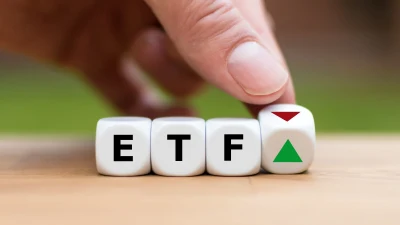Higher monthly inflation leaves question mark over rate hikes



Higher interest rates could be on the cards for 2026 after monthly CPI inflation for October showed an increase of 3.8 per cent.
The Australian Bureau of Statistics’ (ABS) first complete monthly Consumer Price Index (CPI) reading, released on 26 November, showed an increase in inflation rate in the 12 months to October.
The CPI rose 3.8 per cent over the year, marking the first release of the complete monthly CPI, which now replaces the quarterly series as Australia’s primary headline inflation measure.
This was above market expectations which had been forecasting a gain of 3.6 per cent.
According to the ABS, the new monthly time series extends back to April 2024, when more frequent price collection began across several expenditure classes.
Annual inflation of 3.8 per cent to October was up from 3.6 per cent in September. Housing remained the largest contributor, rising 5.9 per cent over the year.
ABS head of prices statistics, Michelle Marquardt noted that underlying inflation had also edged higher: “Trimmed mean inflation for the complete Monthly CPI was 3.3 per cent in the 12 months to October 2025, up from 3.2 per cent in the 12 months to September 2025.”
Commenting on the reading, David Bassanese, chief economist at Betashares, warned inflation will need to convincingly drop below 3 per cent for a rate cut next year. Otherwise, a rate hike could be on the horizon.
“Barring a major slump in economic growth and/or rise in unemployment, for the RBA to contemplate cutting interest rates next year we’ll need to see the annualised rate of monthly inflation dip convincingly below 3%.
“What’s more, unless inflation does convincingly drop to this level there’s a risk the RBA will instead have to consider higher rates in 2026 - on the view that the economy is still operating at an overly high level of capacity which is creating lingering inflationary pressure.
“My base case is that inflation will ease in coming months, on the view that some of the recent price gains have been one-off price level adjustments – or rebuilding of profit margins – as both consumer spending and housing demand has recovered. But even under this scenario, it’s hard to see the RBA having sufficient evidence to justify a rate cut before May.”
Krishna Bhimavarapu, APAC economist at State Street Investment Management, said: “The data reinforces expectations that the RBA will maintain its extended hold. However, the sharp downside surprise in Q3 construction work done could weigh on GDP growth, introducing a counterpoint to the inflation narrative, unless residential activity is an upswing which could negate the impact of the drag from engineering work done.”
Russel Chesler, head of investment and capital markets at VanEck, said services inflation would be the biggest headwind for the central bank. This reached 3.9 per cent, up from 3.5 per cent in September, with rents (4.2 per cent), medical and hospital services (5.1 per cent) and domestic holiday travel and accommodation (7.1 per cent) being the key contributors.
“Services inflation is perhaps the main thorn in the RBA’s side, as this spans across a large portion of the CPI basket. Services inflation has been difficult to conquer given the persistently strong wage growth and tight labour market,” he commented.
Recommended for you
Global actively managed ETF assets hit a record high in October, according to independent research and consultancy firm ETFGI, breaking the record set the previous month.
Federation Asset Management has appointed an investment director and head of responsible investments to support ESG integration strategy across the firm.
Global X has announced the launch of its latest ETF, providing access to Japan’s largest companies under a low-cost structure.
ETF usage by high-net-worth investors is on the rise with allocations rising by a third in the past year but it lags behind direct equity exposure.












